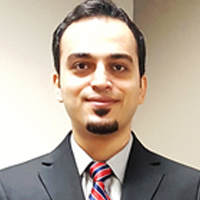Validation of Prognostic Scores for Attempted Vaginal Delivery in Scar Uterus
Published on: 11th April, 2025
Introduction: The rise in cesarean section rates globally has led to a growing population of women with uterine scars, necessitating more targeted obstetric care in subsequent pregnancies. These women are faced with the decision of attempting vaginal delivery after cesarean section (VBAC) or opting for an elective repeat cesarean section. The likelihood of a VBAC depends on various factors both maternal and fetal, gathered in two known scores Grobman and Zhang, utilizing them could make VBAC successful and more widely attempted. This study aims to validate the prognostic of these scores in a Moroccan population.Objectives:• Validate the international predictive scores (Grobman and Zhang) for the probability of a successful VBAC in the Moroccan population.• Explore additional criteria specific to the Moroccan population and develop a simplified VBAC score. Results:• Out of 2,973 women with a cesarean history, 313 attempted TOLAC, 79% of these attempts were successful VBAC.• The characteristics of successful VBAC included lower BMI, previous vaginal birth, lower estimated fetal weight, younger maternal age, and more favorable cervical conditions at admission.• The Grobman and Zhang scores showed good predictive accuracy, with both models achieving 82.2% accuracy.• When dividing women into groups based on predicted success (using both Grobman and Zhang scores), significant differences were found in success rates across different probability categories.Conclusion: Both Grobman and Zhang’s models were effective in predicting VBAC success in the Moroccan population, with a slight preference for the Zhang model. However, further research is needed to validate these models in clinical practice. It could involve developing a more population-specific model.
Metastatic Brain Melanoma: A Rare Case with Review of Literature
Published on: 12th April, 2025
Melanoma is a highly malignant neoplasm arising from melanocytes, which are melanin-producing neural crest cells primarily located in the basal layer of the epidermis, making cutaneous melanoma the most common subtype. However, melanocytes are also found in other anatomical locations, and primary non-cutaneous melanomas, though rare, have been documented. Due to the aggressive nature of this malignancy, it carries a poor prognosis, particularly because it tends to metastasize to various, often atypical, sites. Recognizing these variable presentations is essential for timely diagnosis. Here, we report a rare case of metastatic brain melanoma in a young female and review the relevant literature, highlighting the importance of imaging in identification.
Comparison of Effect of Intrathecal Fentanyl 25µg with 0.5% Hyperbaric Bupivacaine and Only 0.5% Hyperbaric Bupivacaine
Published on: 12th April, 2025
Background: To enhance the duration of sensory anaesthesia and to prolong the duration of post-operative pain relief during spinal anaesthesia, various adjuvants have been tried along with local anaesthetic agent. The present study was undertaken to evaluate and compare the onset and duration of sensory block, motor block and duration of post-operative pain relief by using intrathecal 0.5% Hyperbaric bupivacaine with fentanyl 25µg versus only 0.5% Hyperbaric bupivacaine selected groups.Methods: We enrolled 70 ASA Ι & ΙΙ patients undergoing surgeries below umbilicus level for our Prospective Randomized trial. Those who met our inclusion criteria were randomized using simple random sampling technique, after obtaining informed consent. Patients in Group A received fentanyl 25µg with 0.5% Hyperbaric Bupivacaine and patients in Group B received only 0.5% Hyperbaric Bupivacaine intrathecally. Parameters like onset and duration of sensory and motor block and postoperative pain relief were observed. In postoperative period, VAS score was monitored & time for rescue analgesia was noted, when VAS exceeded 5 or above.Results: It was found that Patients in Group A had significantly prolonged duration of postoperative analgesia as compared to Group B (Z value 17.35). Results of Onset & Duration of sensory and motor block were suggesting insignificant result. Post-operative complication was insignificant in our study.Conclusion: Addition of Fentanyl 25µg with 0.5% Hyperbaric Bupivacaine in Spinal anaesthesia have insignificant effect on duration of sensory and motor blockade and prolongs postoperative pain relief.
Success Rate and Complications of Endoscopic Deacryocystorhinostomy without Stenting: A Retrospective Study
Published on: 16th April, 2025
Endoscopic dacryocystorhinostomy (EDCR) is a well accepted surgical treatment for patients with nasolacrimal duct obstruction (NLDO). Previously, external dacryocystorhino-stomy was considered as the gold standard treatment for NLDO, however, EDCR has gained momentum due to its several advantages. The EDCR has been sounding more aesthetic and as functional compared to the traditional external dacryocystorhinostomy in the surgical treatment of nasolacrimal duct obstruction with comparable outcomes. Purpose: to determine the success rate and complications of endoscopic dacryocystorhinostomy without stenting.Materials and methods: it was a retrospective study performed in the department of Otorhinolaryngology and Head and Neck Surgery (ORL-HNS), Universal College of Medical Sciences-Teaching Hospital (UCMS-TH) from June 2019 to September 2024. A total of 19 patients charts were reviewed. All the cases were performed under general anesthesia. All the cases had undergone without silicon stenting and were regularly followed up for a period of 3 months. Post operative stomal patency and complications were noted based on subjective and endoscopic evaluation.Results: Out of 19 patients, 12 were female and 7 were male with the age range of 12 to 70 years. Transnasal synechiae was seen in 2 female and 1 male patients. Stomal patency was 100% with no recurrence of epiphora in 17 patients (89.4%) during 3 months of follow up. 2 female patients with released synechiae didn’t come for 3 months follow up.Conclusion: It is a safe and minimally invasive procedure and has a comparable success rate to external DCR with an additional advantage of more aesthetic value.
Unusual Complications of a Dental Prosthesis Esophageal Foreign Body: About a Case
Published on: 16th April, 2025
Foreign bodies of the esophagus are part of the traumatic emergencies in ENT. They are most often encountered in children, whereas in adults they occur in a particular context and are rarely overlooked.This was a 48-year-old patient from a neighboring country referred by a colleague for a history of neglected laryngeal contusion with infectious cervical fistula evolving for 2 years. Further questioning revealed a notion of accidental ingestion of dentures. The first endoscopy was of capital interest in especially in the diagnosis and management of this long-retained foreign body. The extraction under general anesthesia was done by a combined endoscopic and external approach. The postoperative course was marked by superinfection and swallowing disorders.Cervical suppurations secondary to esophageal foreign bodies are rare, especially in adults. Clinicians should consider this possibility in the face of any chronic cervical suppuration that resists treatment.
















